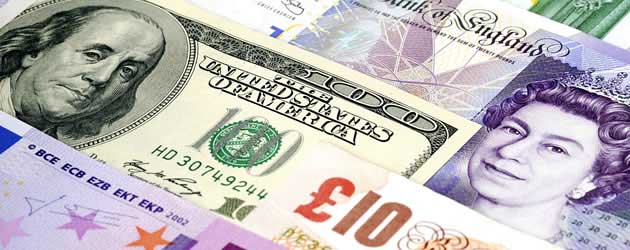
At 18:00 GMT this evening the Federal Reserve is set to announce its decision for monetary policy in September. It is widely expected that the Fed will make a reduction to its $85 billion a month QE3 asset purchasing scheme.
Although the so-called ‘Septaper’ is by no means guaranteed, the amount of effort that Fed policymakers have put in to warn markets of the potential cutback in stimulus indicates that they plan to go ahead with the proposal.
Back on June 19th Fed Chairman Ben Bernanke issued a statement communicating that the US Central Bank intends to start slowly cutting the pace of its quantitative easing programme in 2013, with a mind to pull the plug completely by mid-2014. Since then the majority of Fed press conferences have focussed on the taper in order to prevent jittery investors from overreacting: the last thing the Fed wants is to pull the brakes on the US economic revival by spooking markets and driving interest rates higher to consumers and businesses. However, the world’s most influential Central Bank also knows that it must maintain credibility, and for this reason a small, but symbolic, tapering of QE3 is the most likely scenario to play out later this evening.
The Fed’s expansive stimulus programme is designed to push interest rates down and therefore boost investment in both the US and the global economy. This cheap money has the effect of boosting risk sentiment, which in turn has the effect of weakening the US Dollar because the ‘Greenback’ is seen as a relatively stable, relatively low-yielding currency. Traders look to the US Dollar when they fear that market volatility could lead to losses in other more risky, potentially more profitable asset classes. Therefore a reduction in stimulus should, theoretically, prove supportive to the US Dollar.
Indeed, the global economy shrunk by $3 trillion in the five days following Bernanke’s announcement and the Pound to US Dollar exchange rate (GBP/USD) declined severely by around -9.0 cents in mid-June when talk of the taper first emerged.
However, after striking a 3-year low of 1.4813 Sterling managed to mount a significant 2-month long rally and, helped by a succession of outstanding UK PMI results and encouraging second quarter GDP growth, now stands at an 8-month high of just over 1.5900.
Sterling’s rallies have largely been driven by robust domestic data in Britain, but they have also been influenced by traders pricing-in the possibility of a stimulus cutback. In other words: markets are ready for the taper.
This means that the US Dollar may not strengthen against the Pound this evening, even if the Federal Reserve announces a cutback in asset purchases, even if risk sentiment should theoretically swing in favour of the ‘Greenback’.
Subsequently, we are left with a strange situation. There are three main outcomes:
Outcome 1) would see the Fed stick with its current level of asset purchases: this would leave the US Central Bank’s credibility slightly vulnerable, but would give a massive boost to risk appetite. GBP/USD could potentially rise to significant psychological resistance at 1.60000 and beyond.
Outcome 2) would see a small tapering of asset purchases in the region of $5-15 billion: this would maintain the Fed’s credibility whilst at the same time be considered mild enough to leave risk sentiment intact. This is the most likely outcome and could give GBP/USD a minor boost.
Outcome 3) would see a more aggressive taper of around $20-30 billion: this would likely shock financial markets and lead to a bout of severe risk aversion. GBP/USD could easily fall to technical support at 1.5751 and lower, with the safe haven ‘Greenback’ benefitting from defensive inflows.

Comments are closed.